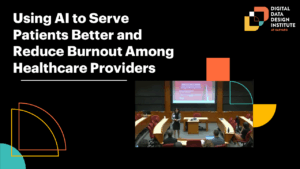Electronic Health Record Implementation
Implementation of an ambulatory EHR across a large multi hospital healthcare system.
Our healthcare system is currently undergoing a system wide implementation of an ambulatory electronic health record (EHR). The implementation includes current system upgrades to model experience and conversion to model across various hospitals and practice plans all of which have disparate EHRs. Since all ambulatory practices will be unified onto a single EHR with a single patient record, this implementation spans the entire continuum of patient care from pediatrics to geriatrics in all specialities. With this comes its own set of challenges as each specialty has its own set of requirements and regulatory obligations as well as well defined workflows. It is well known that any successful EHR implementation involves physician engagement and when this is to be achieved across the entire spectrum of medical care, poses its own set of challenges. How does one reach a consensus on decisions that will impact every physician, and in this case thousands, in your healthcare system? The reality of a go-live event is that you only have one chance to get it right.
My question at this stage of the implementation process is that go-live is likely at least one year away, but in the interim foundational type of decisions. How does one achieve consensus amongst a diverse group of physicians all with different clinical needs and wants on system wide decisions? How can you keep this diverse group engaged in what is likely a long and intense process, and at times somewhat abstract? Once decisions are made there is often no testing ground to investigate the impact of that EHR change in a real life scenario.
I would be interested to get feedback from my peers on your experiences with EHR implementations.




We did this, it is very challenging and at the beginning very unpopular, even when it goes live it is not done completely, it will be an ongoing process.
We got key people from similar divisions in different organizations in one place on regular basis with technical EHR and IT team and went through each entity and tried to get every body’s consensus, if no agreement (can happen sporadically) somebody in charge called the shuts. The most important factor for all parties to know have to compromise at certain point.
Then when you have a final version established, each division will proceed with training their own personnel.
Not easy, not popular at beginning. It won’t be perfect but can be functional.
We are currently going through this process and will go-live on July 1st of this year. The thing that has been particularly challenging for our implementation is that we are not just implementing this at 5 hospitals and 35+ owned ambulatory practices but we are also including facilities that are not part of the hospital system but are part of the continuum of care (Skilled Nursing Facilities, Rehab centers, FQHC’s).
-Creating a sense of urgency: In order to create a sense of urgency we appealed to the altruistic motives that most everyone has in healthcare: a concern for the well being of the patient. It was easy to find examples of where a disintegrated medical record was at best a hindrance to providing quality care and at worst actually harmful to the patient. To fight the abstract nature of this implementation we did this with real-world examples that everyone (clinical and non-clinical individuals) could understand.
-Creating ownership: We then had 2 weeks of demonstrations from the top two EHR vendors and asked that all hospital staff vote on their preference. Two thirds of the system’s employees voted and one of the EHR vendors over 80% of the votes. This helped to create ownership in the decision. Interestingly, that vote has been referenced multiple times during stressful moments of the implementation. It is apparent that the Physicians and staff feel much more buy-in because they chose this system and it wasn’t prescribed to them.
-Keeping the patient at the center: During meetings where decisions are to be made we establish one person as the “patient advocate” (when possible this person is an actual patient from our Patient Advisory Board) their vote carries the most weight. In several instances this has allowed us to break down barriers caused by stakeholders having different perspectives and allows us to make a decision of compromise based on what is best for the patient.
-Keeping physicians engaged: We established physician champions in each specialty (i.e. pediatrics, surgery, Primary Care, cardiology, etc.) and asked them to sign a contract outlining expectations for their involvement in the project. The system also agreed to compensate them for their involvement. We also transferred two very well-respected physicians to full time positions on the project and they have become certified in the system and intricately involved in the actual IT build. We have done the same with nurses. That way even the small decisions have clinical input. We have also spent the time and money to train the physician champions to become Super-Users and they will train their peers on the system. We begin training next month but this train-the-trainer philosophy has proven productive for other systems.
-Go-Live Support: We are investing a lot of resources in “At the elbow” go-live support with robust analytics. We feel that this will be critical to a successful go-live.
-Keeping it front of mind: We have also prioritized keeping it front of mind for all of our front line staff by doing regular “show and tells” in practices or via a webinar. The intention is to help staff feel more comfortable with what the system looks like so that when they go to actual training it is not so overwhelming.
This is one of the biggest projects the system has undertaken and we will see in several months how successful the above initiatives have been. I am happy to share what worked well and what we should have done differently. Make sure you have plenty of coffee and power bars available and don’t be afraid to lean on lessons learned from the thousands of systems who have recently gone through an EMR implementation.
We have done this several times with different hospitals. We have seen bad implementations and good ones. The good ones have seen heavy engagement with front line leaders and did the roll out systematically, and not all at once. They started with a few specialties ( primary care, peds, ect) and then did the roll out at the hospitals after. Engagement was key, so they identified “champions” from each specialty and had regular meetings. Even the “good” roll outs had issues, but with the systematic roll-outs it allowed them to identify issues early on and make changes before the next specialty go live. Communicating the issues seen in the primary care helped the other front line leaders understand what they may see when it rolls out in their specialty.
We are also going through a ambulatory EMR Conversion and I am very sympathetic to many of the challenges you describe.
Couple of thoughts
1. Is there a possibility to do a “wave” approach to the go live.; splitting up the go live from one big bang approach to a staggered approach that is build around specialties? This has worked well for us in making sure we (a). we invest in getting the build correct and (b). are thoughtful around change management .
2. Set reasonable expectations. We involved a lot of our physicians in the design sessions and included a lot of their input but we also were clear and intentional about communicating that not all proposed modifications would work and how decisions would be made around what was proposed.
3. Invest in training and configuration. The worst go lives are when there is confusion. You can have a great EMR but if the providers and staff are completely confused on Day 1 than it won’t matter.
We are also in the midst of a common EHR implementation for 3 hospitals, a couple of specialist clinics and 10 primary care centers. It is indeed a big challenge given the long standing and different practices and workflows in the various institutions/settings. However, it also presents us a chance to do standardisation. While it is a painful and difficult process which requires alot of negotiation and persuasion, there are times when decisions and stand just have to be made. The selection of project sponsors is crucial and it helps to have clinician leaders because for whatever decisions especially hard decisions they make, they would be impacted and could lead by example to do the right thing.
I would not characterize the go-live as a “one chance” only event. I have been through two Epic system conversions and there will be many decisions made throughout the system build that can be optimized at a later date. The key for us was finding well respected physician champions who could help keep the project moving along. The Epic implementation team also has best practice recommendations for many of the decisions that need to be made. Delays are costly and perfection impossible.
The dreaded EHR. We are currently going through this process as well. I am not sure what options you have but this is how we tackled the situation. This became physician led with multiple different groups. For instance, one grouped was designed to achieve feedback in the ambulatory world, and then grouped specialties on the inpatient side. As we all know, different needs would need to be met with the different groups. Our EHR leaders took the feedback quite seriously. They were able to design the login page to meet the demands the different specialties requested. On the back end, the data was centralized. We are staggering the rollout of the new platform so we don’t overwhelm the system. This also gives our team a chance to address the issues that we didn’t realize and correct before the next rollout phase. The entire process is going to take two years. So far we still have full engagement from the physicians and not too much push back. Good luck!